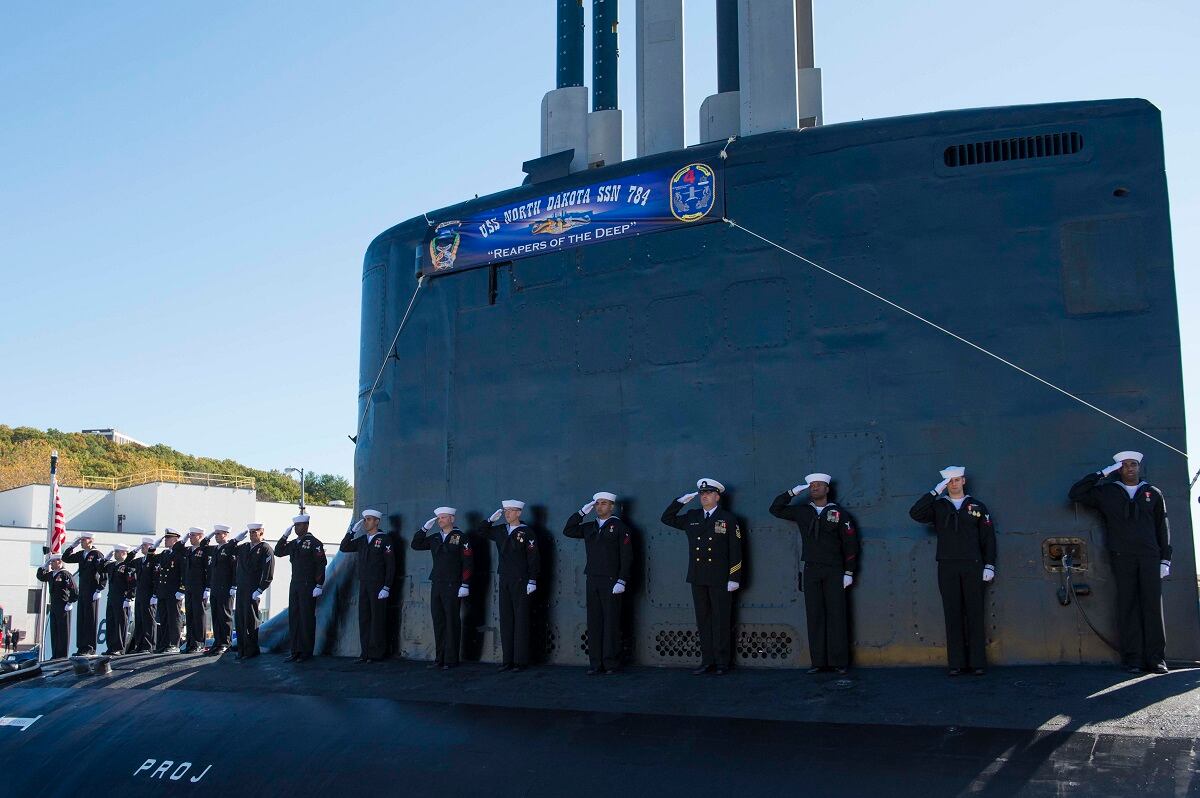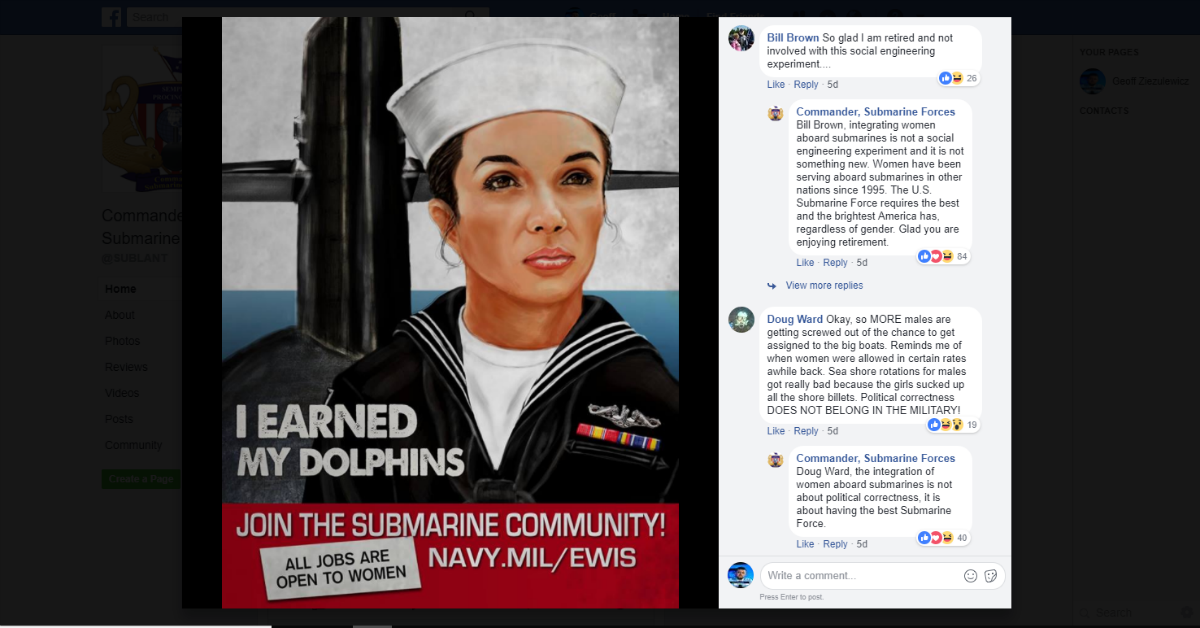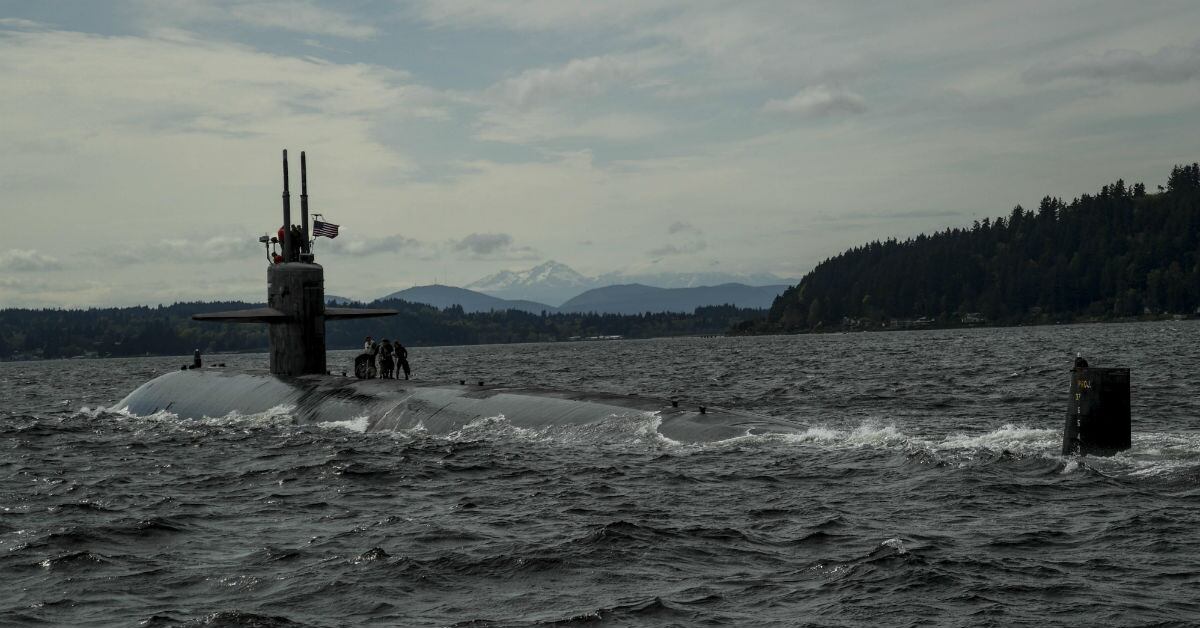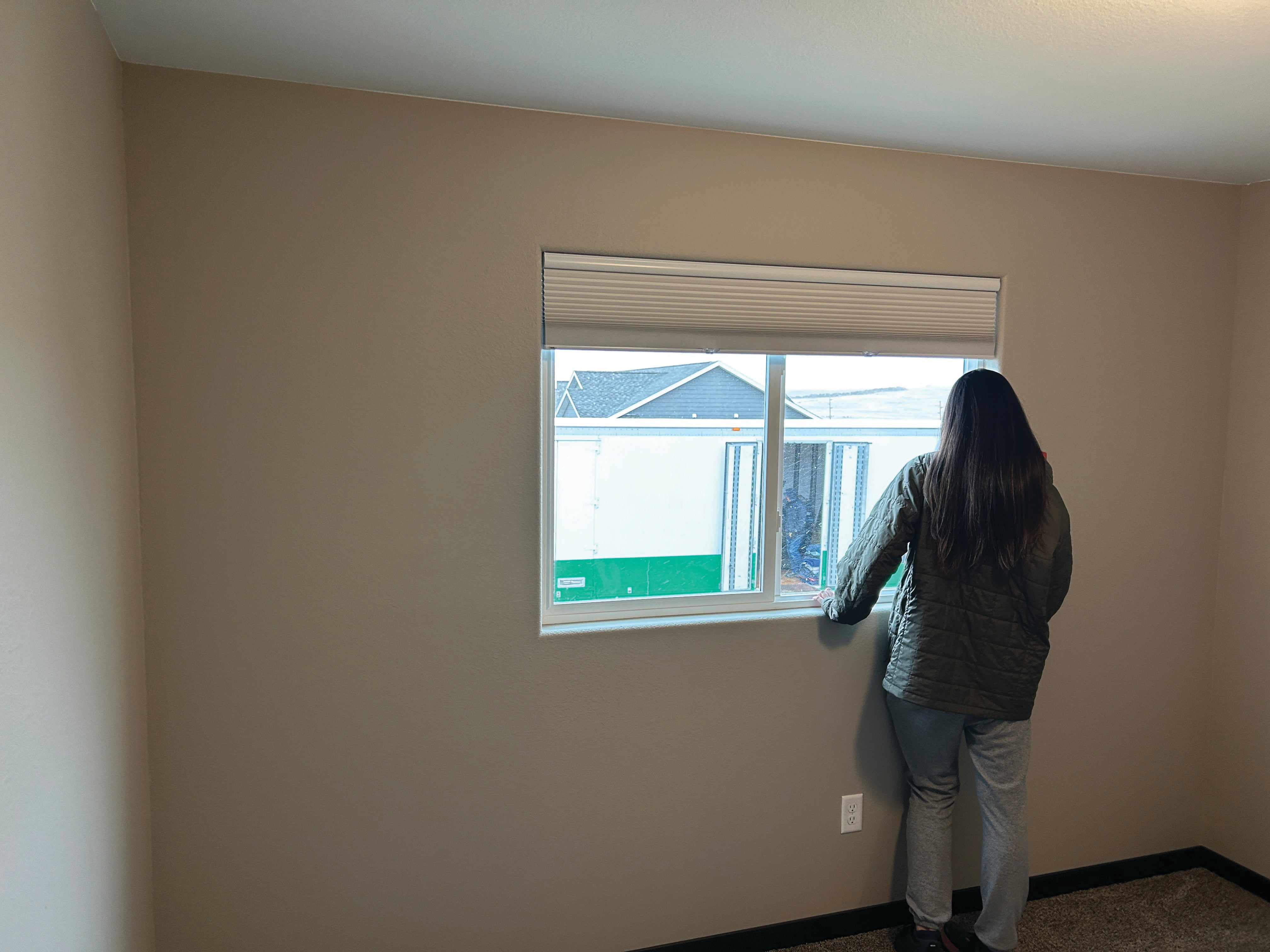A sailor aboard the submarine North Dakota who shot himself in the chest with a service rifle earlier this year had been removed from the boat’s gun list a few months before, according to an investigation obtained by Navy Times.
The petty officer, whose name and rating were redacted in the publicly released copy of the report, shot himself in the boat’s torpedo room on Jan. 12, while the Virginia-class fast-attack submarine was hours away from its Groton, Connecticut, homeport.
The crew sprang into action and was able to get him evacuated and save his life.
He continues to recover, is no longer assigned to the North Dakota and is being medically discharged, according to U.S. Submarine Force Atlantic spokeswoman Cmdr. Sarah Self-Kyler.
Five months before he shot himself, something prompted the sailor to be removed from a list of those authorized to handle firearms aboard the North Dakota, according to the report.
But what motivated authorities to remove him from the list remains unclear in the heavily redacted file obtained by Navy Times through a Freedom of Information Act request.
Navy Times has appealed some of the report’s redacted passages.
RELATED

The report states that the petty officer was stationed as an armed watch stander at the pier gate on Aug. 7.
Two other notable incidents happened that day involving the sailor, but their details are redacted in the report.
In one instance, the petty officer made remarks on the pier that concerned at least one fellow sailor but those words are redacted in the file.
Around the same time, the petty officer’s mother called his chain of command but her concerns were redacted in the investigation.
“In response to both of those events (the sailor) was taken off duty and removed from the gun list,” the report states.
Self-Kyler declined to disclose what happened Aug. 7, citing privacy laws regarding health and medical information.
The petty officer went somewhere that is redacted in the report but “returned for a follow up one week later.”
He was declared “fit for full duty and not a harm to himself or others” by his chain of command on Aug. 15 and his commanding officer, Cmdr. Mark Robinson, signed off on the decision, according to the report.
The petty officer was added back to the armed watch stander list on Aug. 18 and resumed his normal duties, the report states.
“From that day, (the petty officer) continued to stand a professional watch and was stationed with a weapon dozens of times with no issue,” according to the report.
The investigator recommended that the submariner’s injuries be found to have occurred “in the line of duty and not due to his own misconduct,” a finding endorsed by SUBLANT.
The sailor was authorized to handle a rifle and a MK-43 machine gun on Jan. 12, the day he shot himself, and was working a 1:30 p.m. to 9:30 p.m. shift, according to the report.
A lieutenant and a few other sailors were in the torpedo room’s forward end at about 4:30 p.m. that day, preparing for a qualification board, according to the report.
RELATED

Several submariners reported hearing the shot, and the lieutenant found the petty officer “lying on his back in the port torpedo room passageway,” the report states.
Calls for the sub’s medical personnel ensued, and the crew sprang into action to save the petty officer’s life, according to the report.
The petty officer was soon moved to the ward room, where the crew watched his vitals, tried to make him comfortable and reassured him that everything would be okay during the seven hours from the shooting to evacuation off the boat, investigators determined.
“Doc didn’t want to give him morphine because of the uncertain ETA,” one sailor told investigators. “We all agreed and just tried to comfort him as much as possible without pain meds.”
One chief played movies on his computer tablet for the petty officer, according to the report.
“A good amount of shipmates came in for a few minutes each to see him and help keep his spirits up,” one sailor told investigators.
Sailors decided that it would be best to evacuate him through the weapons shipping hatch, and crew members rehearsed carrying another sailor on a stretcher before moving their injured shipmate, the report states.
The boat had to cut through heavy seas and pea soup visibility as they headed back to the mouth of the Thames River to meet a waiting tug.
“From gunshot to ambulance took about 7 hours,” Cmdr. Robinson, wrote in a Facebook post after the incident. “We drove up the river in dense fog, in the dark of night, with intense rain and wind. It was the worst weather I’ve ever seen for something like this.”
RELATED

The Navy redacted several portions of the petty officer’s statement to investigators, including why or how he shot himself.
After the shooting, the ship “quickly turned around and high-tailed it back to Groton” to meet the tug, the petty officer wrote.
“The captain also had the idea of a helo transfer, which I would’ve enjoyed,” he wrote in his statement. “I shouted, ‘hooyah smallboat’ as I was transferred over.’”
The petty officer said his chief was with him the entire time.
Although the petty officer described the “hardest part” of the ordeal, officials redacted that passage in his statement.
“Thankfully enough I’m still here to tell them I’m alright,” he wrote.
“It was a terrible event,” Robinson wrote on Facebook. “But the sailors of (North Dakota) are heroes.”
Geoff is the managing editor of Military Times, but he still loves writing stories. He covered Iraq and Afghanistan extensively and was a reporter at the Chicago Tribune. He welcomes any and all kinds of tips at geoffz@militarytimes.com.





